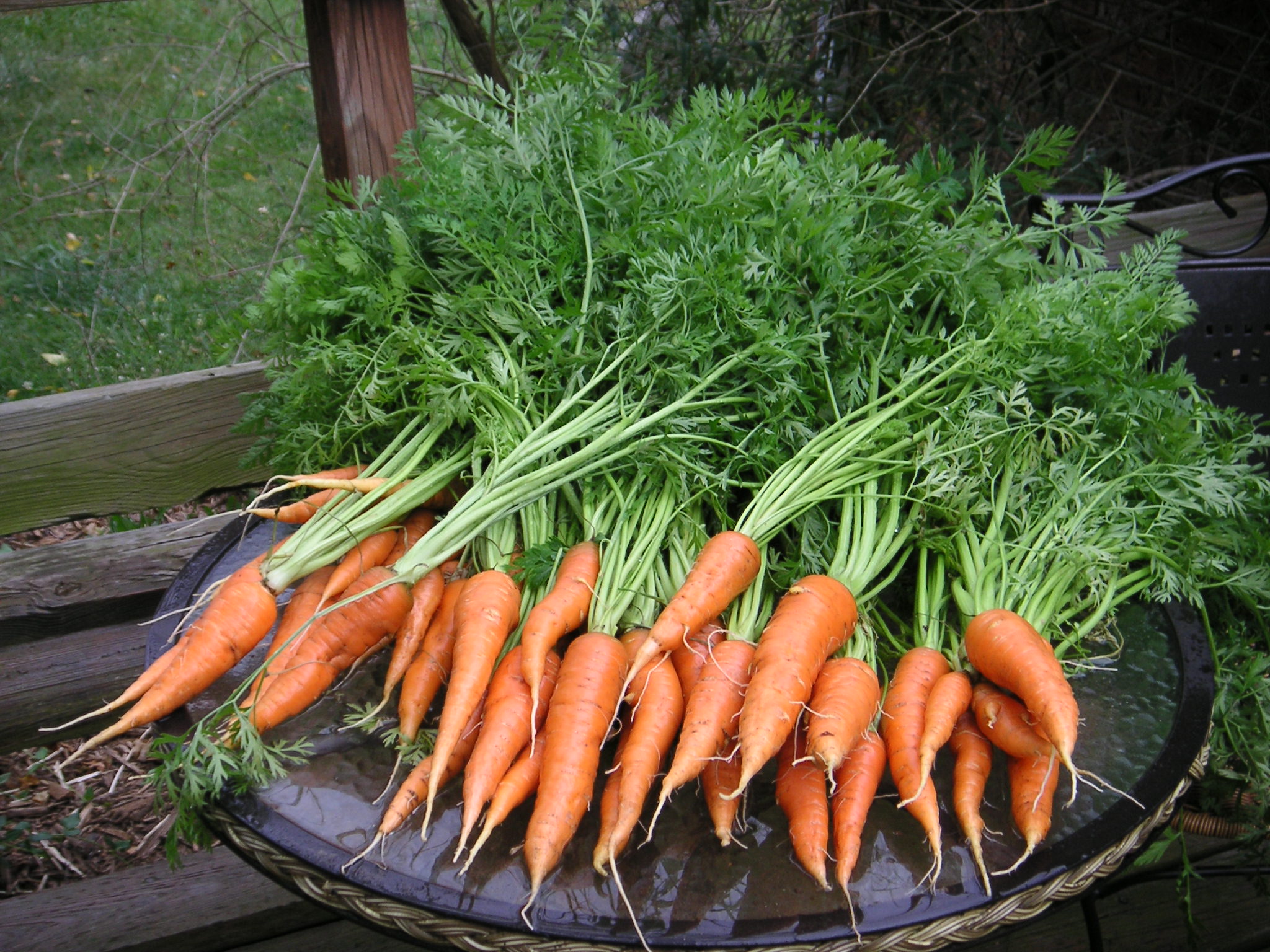
Fresh Carrots From The Garden - Plant Now for Fall and Winter Harvests
Carrots can be a challenge to get started in the garden, especially this time of year. But there is nothing like the taste of a fresh carrot that has been sweetened by the cooler temperatures of autumn. The secret to success is to learn how to sow carrot seeds, pamper them for the first four weeks after sowing and know how to properly thin the seedlings for optimum growth.
Why grow carrots? Carrots are a great source of vitamin A, a type of carotenoid. One cup of carrots provides 428 percent of the recommended daily intake of vitamin A! Other micronutrients found in carrots include calcium, thiamin, niacin, iron, vitamin B6, vitamin E, riboflavin, folate, manganese, vitamin C, vitamin K, choline, phosphorus and potassium. Watching your weight? The glycemic load of carrots is 3 out of a scale of 100, which tells us that a single serving of carrots will have little effect on blood glucose levels. Low-glycemic-load foods are especially important for diabetics. The high levels of antioxidants in carrots, especially vitamin A, help promote good overall health and reduce the risk of cancer and heart disease. The high doses of vitamin A work synergistically with other components in carrots to improve overall eyesight, but are especially beneficial to night vision. Another phytonutrient in carrots, falcarinol, has been linked to protection from colon cancer.
Carrots are in the same family as celery, cilantro, dill and parsley. Select carrot varieties that are best for your soil type. Ball-type and Nantes carrots are best for shallow soils; Danvers and Chantenay produce well in heavy soil; Imperator types require ideal soil conditions (rock- free and loose soil 9" deep). Not all carrot varieties are orange. Seeds for red, purple and yellow carrots are available through seed catalogs. Plant carrot seeds in full sun to light shade in deep, loose soil that is not too rich in nitrogen. Sow carrot seeds directly in the garden - do not transplant. Carrot seeds germinate slowly over a three-week period and it is critical to keep the soil consistently moist during this time. Covering the seed with vermiculite or sifted compost will prevent the soil over the seeds from forming a crust that prevents delicate carrot leaves from pushing skyward.
Carrot seeds are small and over-seeding is typical. When the carrot seedlings are approximately two inches tall, it's time to thin them, leaving the seedlings one inch apart. Without thinning, the roots will not have room to enlarge later on and your harvest will be disappointing. Not a fan of thinning seedling? You can plant carrots in a grid pattern instead of a row. Use your fingers or a small dibble to create 1/4" holes in a grid pattern two inches apart. Place two carrot seeds in each hole, cover the grid with sifted compost or vermiculite and water. When the seedlings are approximately one inch tall, clip any duplicate seedlings and reseed any gaps in the grid.
Mulching the carrot bed is another useful technique for a successful harvest. Carrots do not compete well with weeds and require adequate moisture to develop. Mulch not only helps suppress weeds and holds in soil moisture but will also prevent "green shoulders" on carrot roots that rise above the soil surface.
Because your carrot crop is maturing below ground and out of sight, it is important to mark the calendar with the harvest date suggested for your carrot variety. Pull a couple of carrots every few days after the suggested days to maturity to check for taste. Even if the carrot looks perfect, it is the right level of sweetness you are looking for.